People Product Manager’s Playbook
HPP5: How to engage executives to build organizational features that matter.
(5-minute podcast introduction, edited from Google’s NotebookLLM and Audiotease)
Around a third of major People team initiatives never ship. A third of what does ship is rejected by users on deployment. And a third of what engages users fails to move the needle for the business. This would mean that only three out of every ten People initiatives drive real business impact. It’s a harsh but realistic reality, given how poorly executives typically view HR’s effectiveness.
Executives are a unique combination of buyer, delivery channel, and user of People services. They can undermine an initiative’s impact simply by doing nothing. If they don’t own an initiative, their managers won’t. If managers don’t, employees won’t. And then, despite all the time invested in its development, the launch fails.
Yet, as People Leaders, we often try to shield executives from the “burden” of HR strategies and initiatives. The reality is it’s impossible to build and launch “organizational features”—onboarding, comp structures, leadership training—without deep executive alignment and ownership. We need a repeatable way to make it easy for executives to influence what we build and actively champion its launch.
Product teams have a solid toolkit for solving this problem. They have structured processes to engage stakeholders across the product planning and development cycle. Some of this product thinking, focusing on user experience, user data, and iterative design, has already reached HR. But we’ve barely scratched the surface.
This piece transfers two core tools from product management to scale-up HR—helping People leaders partner with executives to build and launch initiatives that actually land.
The People Roadmap – How to build and leverage a well-scoped organizational roadmap with your executive team.
The People Product Development Process – What touchpoints with executives are needed during scoping, design, and launch to ensure adoption and impact?
By considering the “organization like a product” with HR as the product manager, we can build new features that teams actually use—driving business growth, developing talent, and shaping an engaged workplace. Because at the end of the day, great organizations don’t just grow—they’re shipped.
The Roadmap
Geoff Charles, VP of Product at Ramp, shares how he uses roadmaps to align the leaders.
“We share a high-level roadmap, get feedback from leaders across the company, and ensure it is in lockstep with large marketing moments we co-develop. This helps us amplify our product releases and get loud in the market. Planning is not just specifying goals but also trade-offs. Everyone wants everything to be done—but that simply can’t happen. By making explicit what trade-offs you are making, we were able to engage in much more nuanced discussions around whether we should do X vs. Y instead of the absolute.”
We have similar needs for successfully launching our People products. Function leaders are our closest partners and often the most effective user marketing channel. Without their education and engagement, failure is inevitable. A shared roadmap ensures that executives know what products are being developed, why they are important, and where they can influence each feature. HR Business Partners can also use these plans to frame a shared agenda with their executive clients and position themselves as strategic advisors.
The Company’s People Roadmap should be a prioritized schedule of products needed to progress toward our goals and execute our People Strategy.
Lenny Rachitsky, Lenny’s Newsletter, Oct 18, 2022
The most common mistake is having too much on the roadmap, which is evidence of an absence of the strategy needed to prioritize. Products on the roadmap should impact the business and require a significant lift from the executive team. In a previous article, I described how answering three questions can help form the core of a People Strategy closely tied to business impact.
If you don’t yet have a People strategy, the bulk of your roadmap should consist of products that answer these questions.
A People roadmap should align stakeholders on what products will/will not ship and their intended impact. It should also guide their involvement in each product's scoping, design, or launch stage. Like a customer-facing roadmap from the product world, a shared People Roadmap needs to be simple, with only the information required for executives to voice their feedback on impact and priority easily.
The Miro board I’ve created above simply shows the Product Name, Development Stage, Business Impact, and User Objective. The reverse shows details on the Launch Date, Responsibilities, and Lift Size for the Executive Team. The roadmap should be highlighted with each executive engagement and updated monthly. It should bring some calm to the chaos of having multiple products at different stages and the many roles executives are asked to play in our work.
Avoiding Product Failure Traps
A roadmap is critical, but the gap between intention and effect is massive. As mentioned, only three of every ten initiatives move the needle for the business. The others fail to engage users, make an impact, or even fail to ship. These three traps correlate with product success criteria from design thinking: feasibility, desirability, and viability. Understanding these anti-patterns can help inform a repeatable design and launch process to overcome them.
To show how these factors can be used in a design process, here is a simple framework I built to guide teams in designing small products that can be completed in a 2-week sprint. In this very light process, product plans are mapped against the Viability, Desirability, and Feasibility factors here, then assessed with their Team Lead to make a go/no go call before development starts. This could also be a good place to start for teams that find the following chapters overwhelming.
Scope right until it hurts
In Russian, the phrase isn’t “measure twice, cut once” but “measure seven times, cut once.” To avoid the main failure traps when developing major People products, the depth of planning should be between rigorous and onerous. We need to emerge from the Scope phase with the following:
High confidence in the team's ability to successfully ship and implement the product within existing constraints.
High confidence that end users will engage with and perceive value in the product.
High confidence that the product will meaningfully impact our goals, aligning with our strategy.
It’s legitimate and desirable for products to fail the Scope phase if these conditions are not met. This can be because more iteration is needed or because we have learned that developing this product is not workable now. If a product plan is not well developed here, no amount of execution will save it.
During my time at Miro, Farbod Saraf, and the Product Management team used a Product Alignment Document (PAD) to divide the Scope phase into two main parts: Opportunity/Problem Framing and Solution Framing, with a go/no-go decision gate in between. This helped teams avoid wasting time scoping a solution to a problem that, on examination, we didn’t want to solve at this time.
Opportunity Framing asks: What problem are we trying to solve? What will be the impact of solving? How have others solved this problem?
Solution Framing sets the parameters for the solution, maps the development process, and surfaces required resources, tradeoffs, and execution risks.
During my tenure at Miro, I customized the PAD for developing major People Products. The “Guiding Questions” help design teams determine what to work on, and the “Criteria” help them assess their progress.
Opportunity/Problem Framing:
Solution Framing:
Executive Team Touch-points
You should schedule time in the executive agenda for a brief People Product Kickoff for each feature on your roadmap. As preparation, you should have finished “Opportunity Framing” and have preliminary drafts on “Solution Framing.” The key deliverables for this time are to:
Challenge and validate each aspect of the Solution Framing completed thus far.
Capture insights from executives' relevant experiences.
Align the capacity needed from leaders and functional employees in the design process.
Design sparingly
Some problems demand that we design breakthrough solutions, but most don’t. Great companies have already solved most organizational challenges well enough for us to copy, adapt, and move on quickly. This is lucky, as good design is highly resource and time-intensive, so we have to use it sparingly.
Among its remarkable achievements, SpaceX invested over $3 billion into developing reusable rockets, culminating in the Falcon 9. It was the first orbital-class rocket capable of reflight and now has launched more than any rocket in history, with 80% of launches using reused boosters. This ground-up innovation reduced launch costs by 90%, making space access more economical and reinvigorating the entire industry.
Meanwhile, in 2024, BYD became the world’s top-selling EV company—not by designing everything from scratch but by rapidly scaling existing technology. Their 41% growth overtook not just Tesla but also Honda, Nissan, and Suzuki. One approach focuses on invention, the other on refinement. People teams need both.
The most critical step in the Design phase is deciding whether to innovate like SpaceX or fast-follow like BYD. True innovation can create market-leading solutions but is resource-intensive and can risk falling into the “not shipping" if moving too slow or the “user rejection” if going too fast. Fast-following accepts proven practices and their limitations to move quickly at the risk of not being built for purpose and falling into the “doesn’t move the needle” trap. Given time and resource constraints, only a fraction of your design capacity should go toward true innovation. A team spread too thin will fail.
(Principles drawn from Elon Musk’s 2021 interview at SpaceX's Starbase facility, Everyday Astronaut).
(Principles drawn loosely from Greeven & Yip’s “Six Paths to Chinese Company Innovation”, Northeastern University)
Executive Team Touch-points
The People Product Kick-off helped us scope the solution. Now, we need to engage the executive team in validating or course-correcting our design. This is best done in two steps.
Early in the Design phase, one-on-one with each executive team member to test the planned solution in discussion before it is built. This should challenge key assumptions and ensure that the relevant context from the functions has surfaced through discovery.
Late in the Design phase, with the full executive team, to demo the full product and confirm confidence in realizing usage and business impact goals. The meeting should also align the team around the Launch timeline and roles required to play in its success.
Launch together
"Everyone’s time is already allocated." — Marc Andreessen
Most products—even beautifully designed ones—fail at launch. You might have rigorously tested with employees and validated your product’s use case, but the Launch phase is when the collective mindshare of the organization decides whether a product is worth using or just more noise.
People teams often miss this reality. Unlike external products that compete in a marketplace of solutions, People Products don’t have competitors—but they are competing for meaning and attention. Our unique ability to define mandatory practice can blind us to this challenge; compliance can get employees to perform a behavior, but it won’t drive engagement, integration, or actual impact.
Executives play the most critical role in communicating this meaning. Line managers watch them to determine priorities, and employees watch their managers. Everyone can tell when leaders read talking points they don’t understand or aren’t fully aligned with. However, when executives genuinely champion an initiative, their teams naturally integrate it into how they define their work.
If you’ve invested in executive champions during the Roadmapping, Scope, and Design phases, you’re ready to Launch together. Two disciplines have thought deeply about leveraging leadership to drive the kind of impact we seek:
Internal Communications teaches us that how something is communicated—not just what is communicated—determines engagement. Messaging clarity, repetition, and alignment with leadership matter as much as the content itself.
Change Management teaches us that leadership activation, short-term wins, and cultural reinforcement are required for initiatives to stick. Early visible success drives momentum, and ongoing reinforcement ensures adoption.
The model below draws on both fields to provide a structured operational guide for launching together with your executive team.
Becoming a Minimum Viable People Product Manager
Executive, people manager, business partner, talent advisor, culture builder. The Head of People’s responsibilities are broad, but adding PM for the organization brings structure to how we build each role. Instead of shielding our executive peers from the People agenda, we can adapt the PM toolkit to make it easy for them to influence and champion the products we build. But how do People Leaders learn the core skills needed to deploy this toolkit?
"There isn’t enough time on this Earth to learn everything you could about those three circles [Business, UX, and Technology], so as helpful as this diagram is, it ends up impractical... The Minimum Viable Product Manager defines a set of skills or knowledge useful to be an effective generalist product manager, one who can work on almost any problem."
Brandon Chu, former VP of Product at Shopify, MPVM: Minimum Viable Product Manager
This is precisely the problem that People leaders face. We don’t need to be full-time PMs, but we do need the minimum viable skills and knowledge to play the PM role for our organizations. Brandom wrote a “syllabus of sorts,” and I’ve heavily modified it to fit our People Product context below.
As I’ve heavily drawn from Brandon’s excellent piece in this chapter, he deserves the closing line.
“I don’t want to trivialize learning all this stuff. It’s not easy, and it takes a lot of time, so tackle it bit by bit and enjoy what you’re learning. I hope this helps you be a little more efficient in your quest to be a great if minimally viable, product manager.”







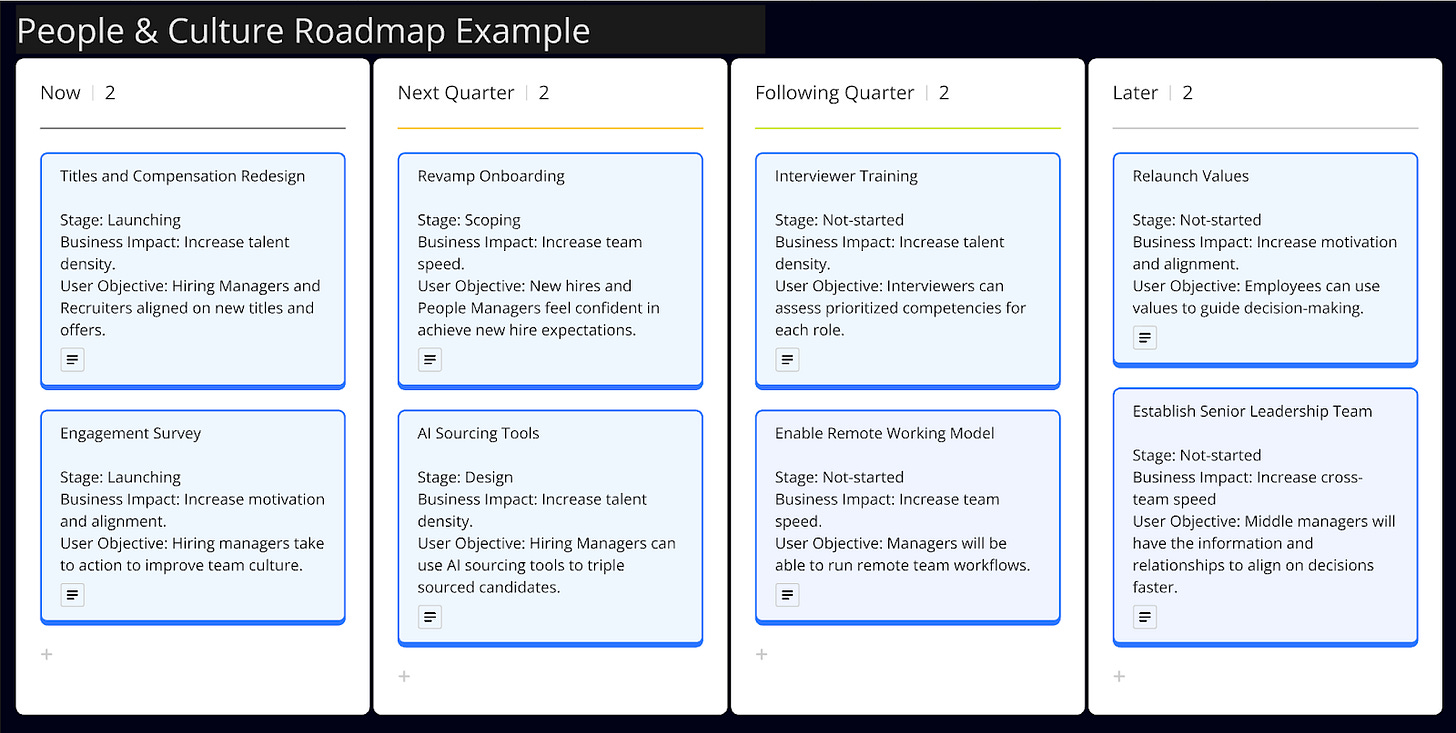

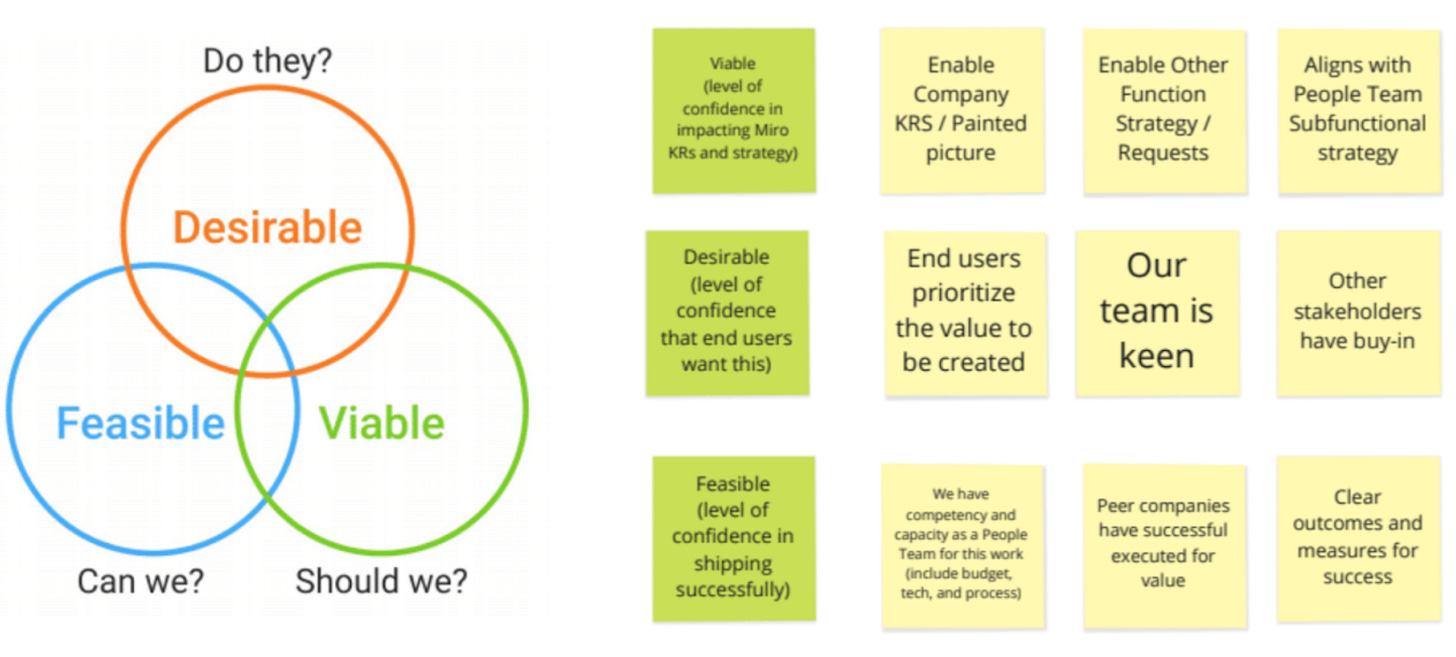
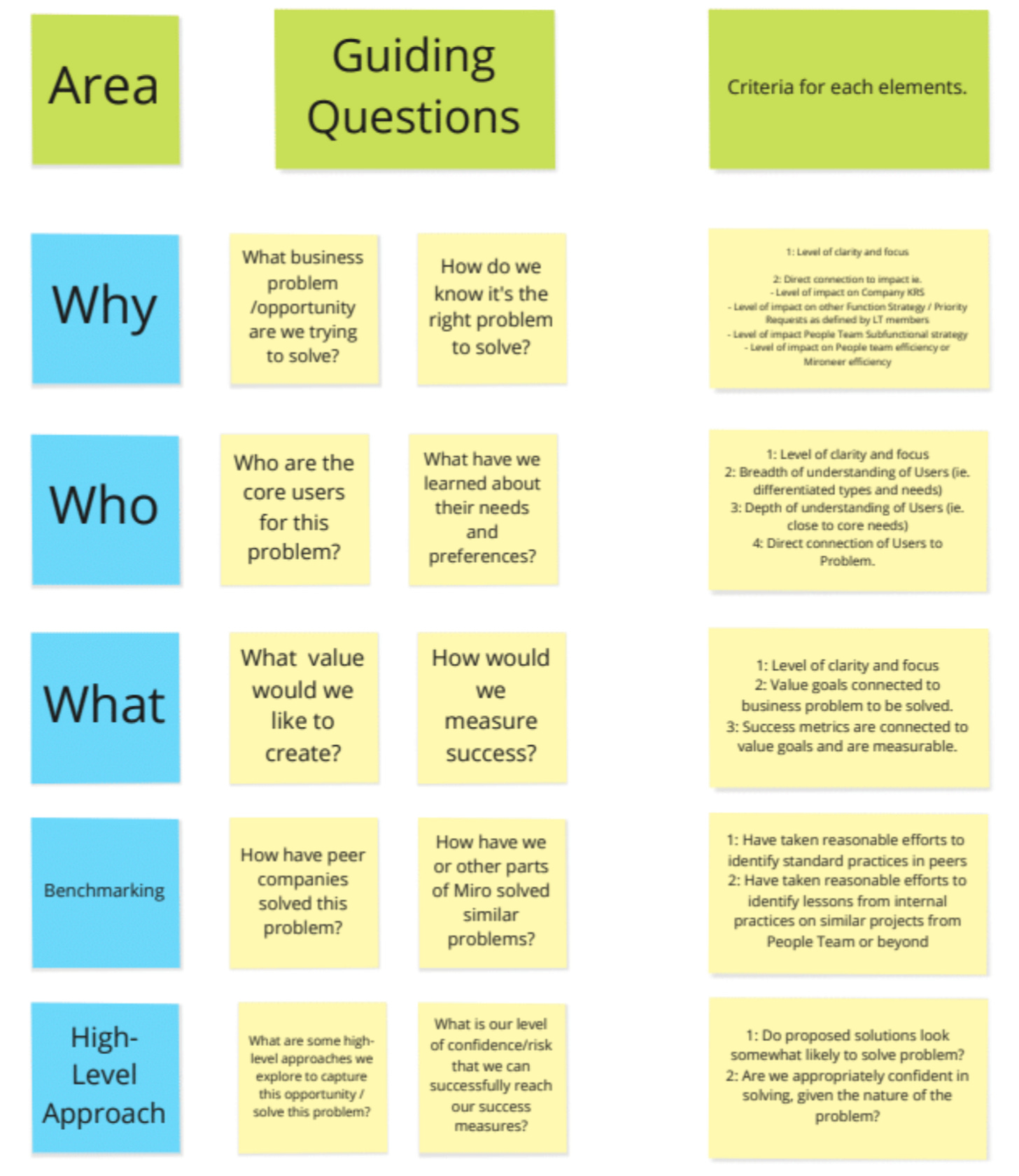
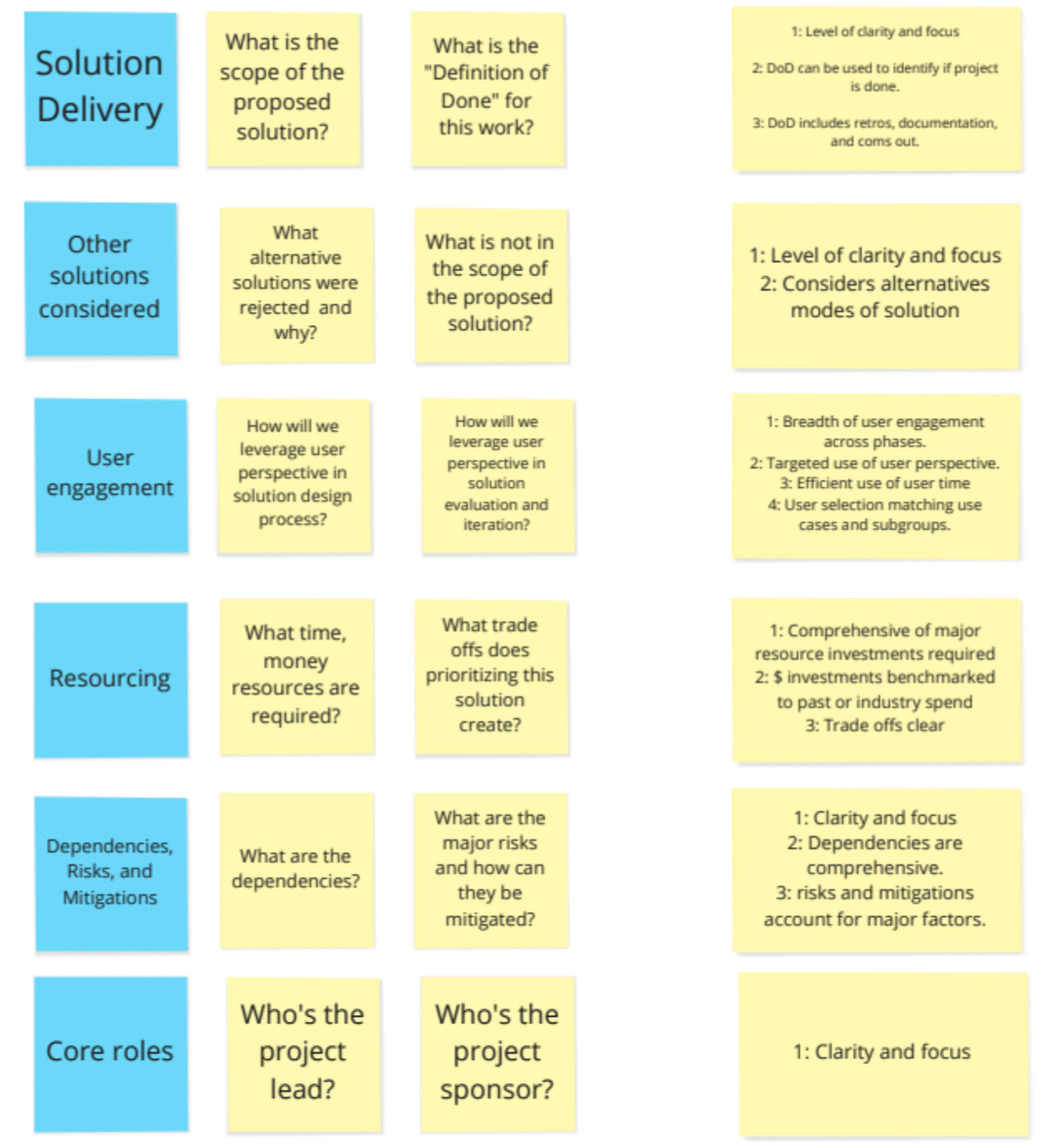

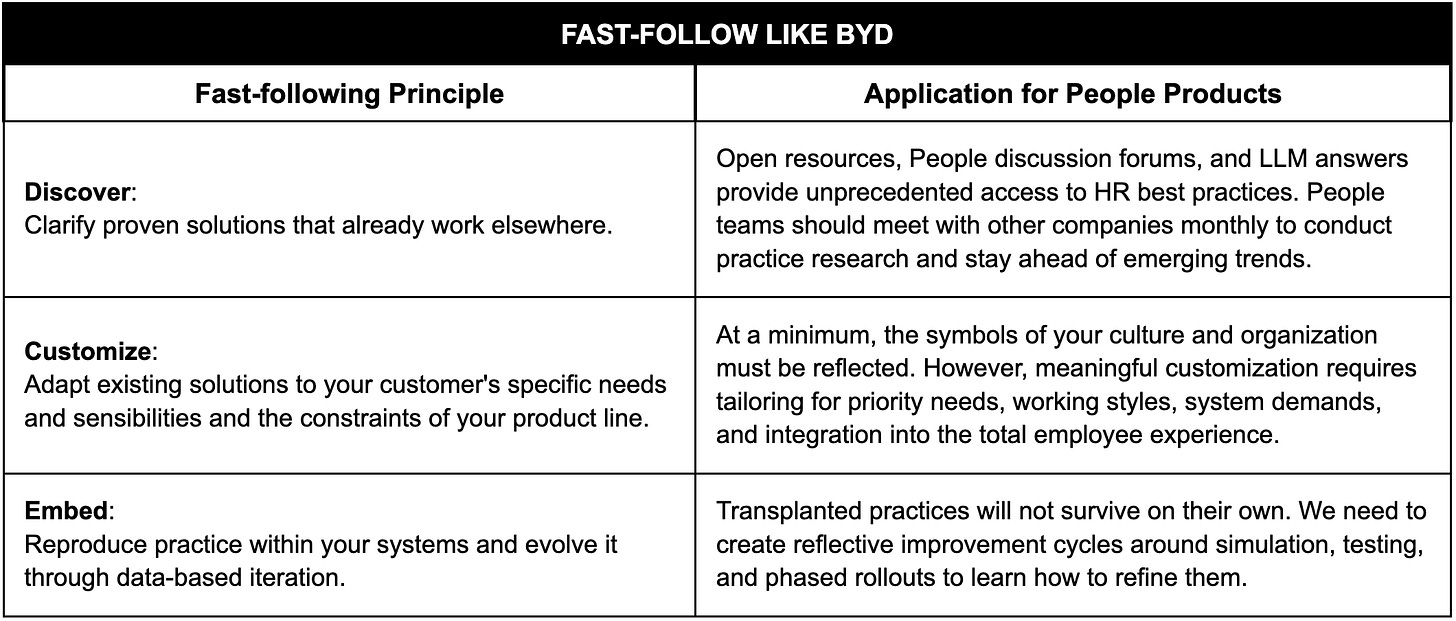
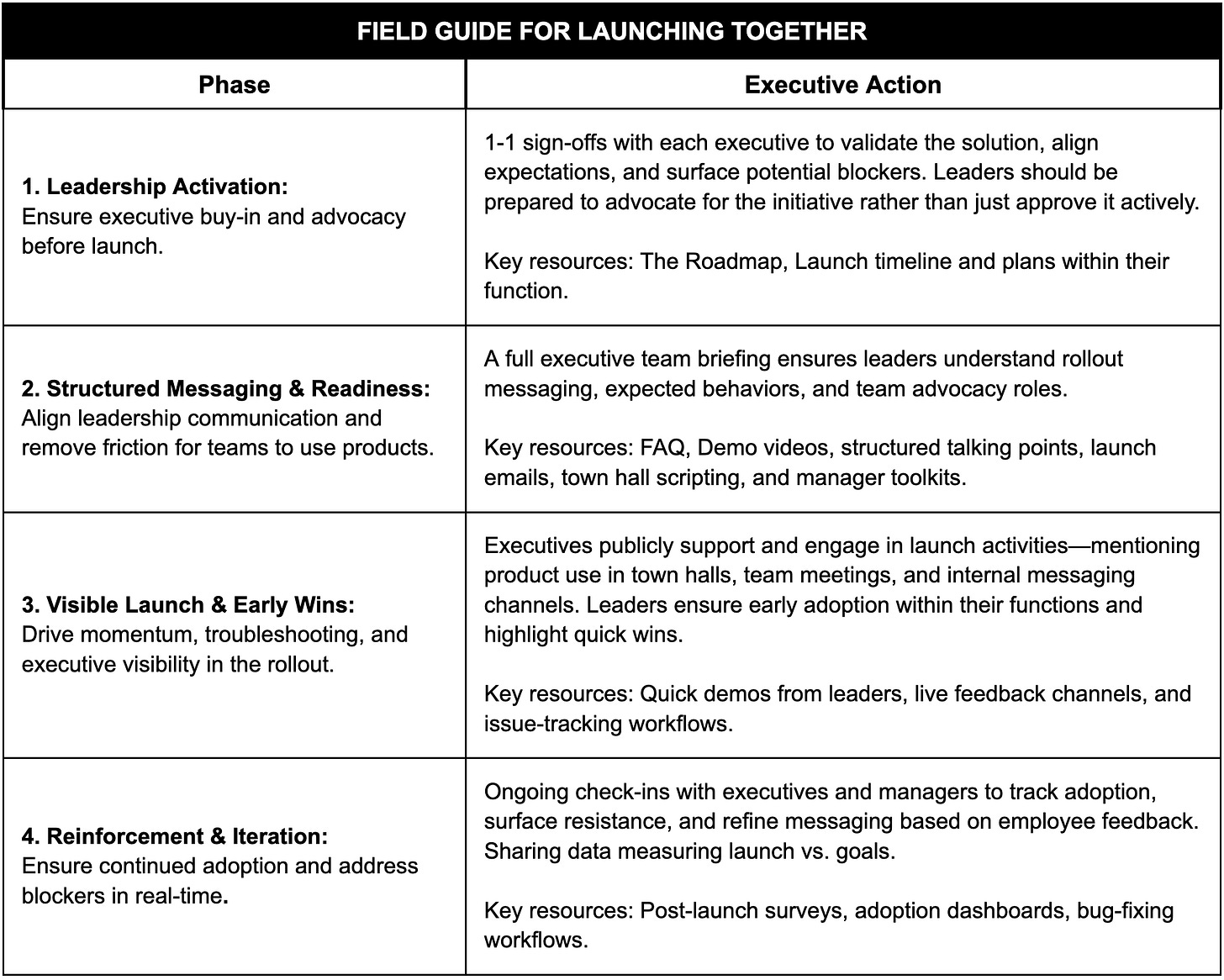


This is so complete that I feel like I'll have to read it twice (at least). Thanks for sharing!